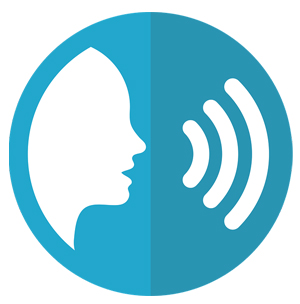Speech and language disorders clinic
 Our experienced speech therapist uses knowledge and expertise to treat a number of conditions that affect the speech and language abilities of the patient. These include:
Our experienced speech therapist uses knowledge and expertise to treat a number of conditions that affect the speech and language abilities of the patient. These include:
Our experienced team of speech therapists use knowledge and expertise to treat a number of conditions that affect the speech and language abilities of the patient. These include:
Speech disorders:
- i) Apraxia of Speech in adults:
Apraxia of speech is a neurogenic speech disorder with neuropathology in left cerebral hemisphere areas like broca’s and supplementary motor area. It is mainly characterized by an articulatory or phonological disorder including sensorimotor problems in positioning and sequentially moving muscles for the volitional production of speech. This is mainly seen in cases of degenerative neural diseases like Multiple Sclerosis, Primary progressive aphasia, Creutzfeldt – Jakob disease, etc. - ii) Articulation and phonological disorders:
Articulation and phonological disorders of speech are characterized by difficulty in producing speech sounds correctly, either the sounds may be omitted, substituted, deleted or distorted. These are more commonly seen in school – aged children in association with language disorders like Speech and Language Delay. In adults, these disorders are mainly seen in cases like Dysarthria, Apraxia of speech etc.
iii) Cerebral palsy:
A non-progressive neuromotor disorder resulting from damage to a child’s brain before, during, or shortly after the birth; often described as congenital but resulting in neuromotor control problems causing speech disorders in many but not in all the cases.
- iv) Cluttering:
Cluttering is a disorder predominantly affecting speech but also may involve language and thought processes. It is mainly a fluency disorder often coexisting with Stuttering. This disorder is characterized by rapid and irregular speech rate and indistinct articulation. It can also be described as a hurried speech under normal circumstances. - v) Dysarthria:
Dysarthria is a group of motor disorders resulting from disturbed muscular control of the speech mechanism due to damage of the peripheral or central nervous system, oral communication problems due to weakness, incoordination or paralysis of speech musculature, physiologic characteristics include abnormal or disturbed strength, speed, range, steadiness, tone and accuracy of muscle movements.
Communication in dysarthria is characterized by disturbed pitch, loudness, voice quality, resonance, respiratory support for speech, prosody and articulation. - vi) Dysphagia:
Disorders of swallowing problems in the execution of the oral, pharyngeal and oesophageal stages of swallow, includes problems in chewing the food, preparing it for swallow, initiating the swallow, propelling the bolus through the pharynx, and in passing the food through the oesophagus. Speech and language Pathologists assess and treat oro-pharyngeal disorders of swallowing, oesophageal swallowing disorders handled medically.
The causes include a variety of physical diseases and disorders including several neuropathologies resulting in paralysis of the muscles involved in cancer and the consequent surgical treatment (laryngectomy), a majority of patients assessed and treated in medical settings because of the associated diseases which may occur at any age although more common in the elderly.
vii) Stuttering:
A speech problem generally regarded as a disorder of fluency and rhythm. It is mainly a disorder of primarily early childhood onset but also seen in adults with observable behaviours. It includes certain kinds of dysfluencies like part-word repetitions, whole word repetitions, speech sound prolongations. It is associated with tension, struggle, avoidance and negative emotions with unusual amount of muscular effort or tempo during the act of speaking.
viii) Voice disorders:
Voice disorders are the various disorders of communication related to faulty, abnormal or inappropriate loudness, pitch, quality and resonance. Voice in voice disorders can also be described as the one that does not help meet the social and occupational demands of communication, voice that deviates from expectations based on age, culture or gender, may be associated with tension or a sense of discomfort in some cases.
Language disorders:
- i) Aphasia:
Aphasia is a language disorder caused due to brain injury in which one or more aspects of language comprehension and production may be affected.
Most common cause is a stroke or cerebrovascular accident that deprives the oxygen supply to the brain and causes lesions. - ii) Language disorders in children:
In children, the language disorders mainly include difficulty in learning to comprehend and/or produce semantic, phonologic, syntactic, morphologic and pragmatic aspects of language, deficient and/or inappropriate verbal behaviour in children, found in a varied group of children, some of whom have associated clinical conditions like Autism, Intellectual Disability, Attention Deficit and Hyperactivity Disorder, Receptive and Expressive Language Delay.
iii) Language disorders in adolescents:
In adolescents, the language disorders include semantic, morphologic, syntactic and pragmatic language problems that persist from early childhood and those that are due to a failure to acquire more advanced skills of language and literacy, problems in reading, writing, advanced discourse, and critical, logical and scientific reasoning.
- iv) Language disorders in adults:
Language disorders in adults mainly include difficulty in comprehending, formulating and producing language. It is often referred to as a loss of language functions due to physical diseases, especially neurological diseases like Aphasia, Dementia, language disorders associated with Right Hemisphere Damage and Traumatic Brain Injury.
